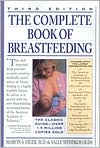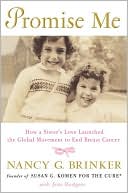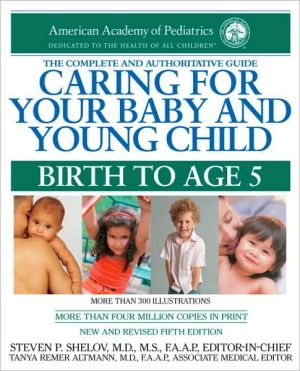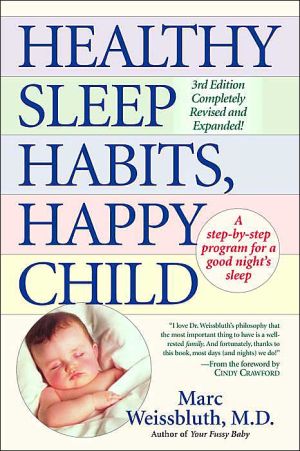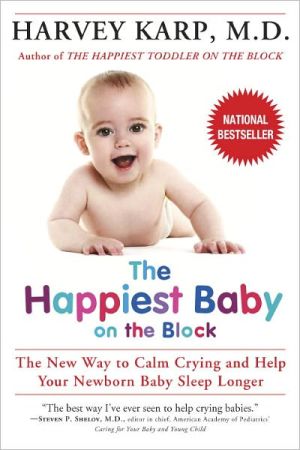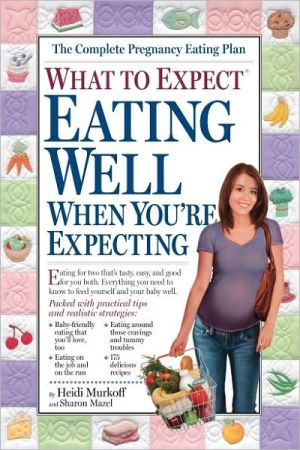Complete Book of Breastfeeding
Make the Most of your Nursing Experience\ Dr. Marvin Eiger, a nationally known pediatrician and breastfeeding authority, and Sally Wendkos Olds, an award-winning medical writer who nursed her own three childrem, provide you with all the new information you need to make nursing your baby a deeply rewarding part of your life.\ Praise For The Third Edition:\ "This edition is a wonderful blend of the art and science of breastfeeding. We all need it!...It is the only breastfeeding book that can be...
Search in google:
With over one and a half million trade and mass-market paperback copies in print, The Complete Book of Breastfeeding is one of the recognized classics in its field. Now it has been completely revised and updated, and dovetails perfectly with the recent major policy statement by the American Academy of Pediatrics, which recommends exclusive breastfeeding for the first six months and continued nursing for at least one year and as long thereafter as mother and child desire. In addition to incorporating the new AAP guidelines throughout the book, the Third Edition draws on the very latest research from prominent scholars and practitioners in the field. It presents new information on how breastfeeding offers protection against various diseases for both child and mother; new discussion of the positive impact of breastfeeding on a child's cognitive development; a greatly expanded section on available support systems and their importance; guidelines to help a mother-to-be choose a hospital or birthing center with breastfeeding-positive policies; and a new section on signs of baby's adequate milk intake, with charts. Plus new and expanded sections on nutrition for lactating mothers, the mother's social life, the role of the father, the nursing working mother, how to express, store, and offer breast milk, and how to wean your child. This is the warm, accessible, and authoritative guide for every new mother.
Introduction\ If you were living at some other time or in some other place, you might not need this book. You might even wonder about its purpose, since you would be getting much of the information of these pages from your mother, your aunts, your older sister, and your neighbors. They would share with you their breastfeeding experiences and those of their mothers before them. As you saw them suckling their infants, you would pick up the "tricks of the trade" without even realizing it. It would never occur to you that you would not nurse your baby, because every baby that you had ever seen would have been fed at his mother's breast - except in the extremely rare case when a mother was too ill to nurse.\ The paragraph that you have just read appeared as the introduction to the original edition of this book, published in 1972. It is one of the very few paragraphs that were carried over to the second edition, published in 1987, and once again into this edition.\ Much has changed in the twenty-six years since The Complete Book of Breastfeeding was first conceived. The year 1971 (when the first edition of this book was being researched and written) marked the lowest rate of breastfeeding in the history of this country: Only one in four women even bean to breastfeed their babies. By 1987, well over half of all American mothers were nursing their newborn infants, and among well-educated middle-class women, the incidence was even higher. There was a slight dip in the prevalence of breastfeeding in the early 1990s, but that reversal has been righted, and the rates of breastfeeding are climbing again.\ Over these years we, the authors (a pediatrician who has cared for hundreds of breastfed babies and a medical writer who nursed her own three children), have been delighted to see an explosion of research into the properties of breast milk, the value of nursing for both mothers and babies, and the practices that enhance or hinder the course of breastfeeding.\ We have applauded professional organizations like the American Academy of Pediatrics, which in its December 1997 policy statement on breastfeeding acknowledged its great importance and urged doctors to help mothers and babies follow practices to ensure healthy nursing experiences. The Canadian Pediatric Society and the World Health Organization have also issued strong statements urging mothers to nurse and urging medical professionals to help mothers breastfeed their babies.\ We've been happy to note that today's physicians learn more about breastfeeding in medical school and are less likely to believe that formula is "just as good" as breast milk, and that more hospitals are instituting more policies that promote breastfeeding rather than interfere with it.\ Today, then, if you have questions about breastfeeding, you're more likely to have sources to go to - the doctors, nurses, and midwives who help you in childbirth, the friends and neighbors who are nursing or have nursed their
Introduction Will You or Won't You? Questions You May Have About Breastfeeding The Miracle of Lactation Before Your Baby Comes Our Baby is Here Breastfeeding Begins Eating, Exercising, and Your Weight How You Look, How You Feel Drugs and the Nursing Mother You Are a Nursing Family Your Other Life The Working Nursing Mother Breastfeeding: A Sexual Passage Especially for the Father Preventing and Treating Nursing-Related Problems Special Situations Expressing and Storing Breast Milk Weaning Your Child Resource Appendix: Helpful Organizations and Sources of Information
